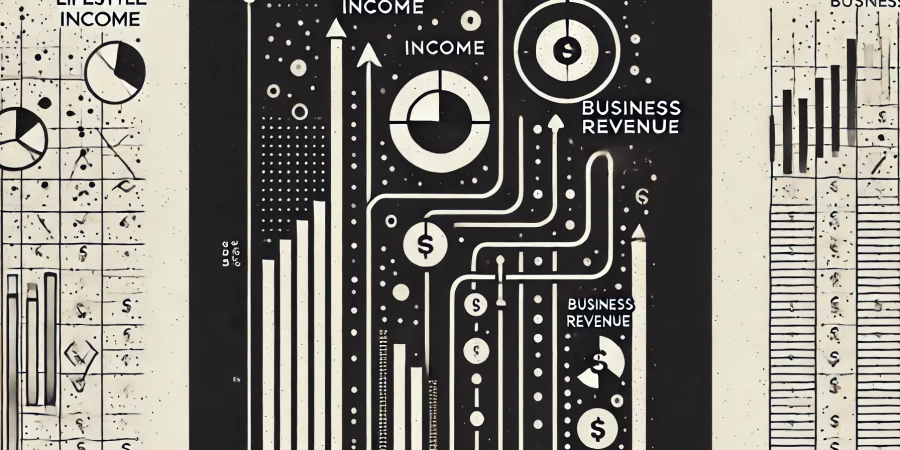It happened again. Recently I provided a proposal for a prospective client, and I made the mistake of including an hourly rate of $125/hr on the contract. Now, the prospect has ignored all of my follow up messages since I sent the proposed contract to be approved and signed. I can assume the lack of response is because we never took time to discuss in detail the real value of the project and what the real expected outcome was.
Instead of taking time to discuss value, we just did what it seems all "busy people" do and had a couple of quick conversations, and I put together a basic proposal. Prospect believes they need help with "web stuff" and wanted to know how many hours it would take, and I made the mistake of giving an estimate based on hours.
I'm pretty sure that this prospect is used to paying their full-time employees a rate of $20-$30 per hour, and my "rate" seems high, so they are simply making a decision to find someone else who is "more affordable".
All mistakes aside, in this lesson I will briefly share why we should not sell hours, but rather sell outcomes. I also share a couple of spreadsheet calculators to show some of examples of how limited we are when we choose to sell hours, regardless of the rate we charge.
Producing a quote or price for projects... gets confusing.
At best, estimating the number of hours it will take to complete a project is always an educated guess. The more experienced you are, the more educated the guess - but it’s still just a guess. Murphy’s Law and any number of variables can throw your estimated hours off course exponentially in an instant.
So rule #1 is that you need to give yourself plenty of margin regardless of how pressured you or a potential client may feel to get a project done.
Capacity is always an issue.
It’s likely that most of us over estimate the amount of productive time that we are able to personally spend working on projects.
For me, creative and knowledge work productivity comes in waves. There are times when I’m hyper productive for long hours and days at end, and days or weeks when I’m the complete opposite. It is not something that I just turn on or off on demand between the hours of 9am-5pm.
I show up every day, but I also need space to work when I choose, which means not being crammed into an 8 hour work window.
So, following a blend of studies and my own personal experience I’ve come to the conclusion that I have the capacity to be PRODUCTIVE on design or development tasks (on average) a maximum of 3 - 4 hours per day before my brain power diminishes greatly. This is also usually in bursts of 90-120 minute work sessions before I need an extended break to eat, exercise… Or talk to another human (preferably my wife or sons), do nothing, or even take a nap.
This equates to a maximum of 15 to 20 productive hours per week dedicated to projects. Or a maximum of 750 to 1000 hours per year.
Now working with these limits on capacity can give me a baseline for estimating project timelines, or act as a variable to figure out a minimum hourly rate target but in no way does it define the VALUE that my work creates or does it guarantee me to be productive.
So rule #2 is to let your capacity dictate LIMITS on your schedule, but not to determine project value.
Personal financial needs.
This also tends to be a gray area where many independent contractors grossly underestimate their needs, or simply leave factors out such as insurance or taxes.
The poor result is then since we underestimated our financial needs, we overestimate our capacity and available hours to make up for it…
Which outputs a lower “wage” that as you can imagine backfires on us with a vicious cycle of pressure, stress, lack of sleep, etc.
You only have a very limited number of hours a year to work and very real financial needs that can equate to hundreds of dollars per hour as a rate.
If you SELL hours, then all you and your client will focus on is controlling the rate, or the number of hours. Both of which are severely limiting.
But if you sell an outcome that the project can produce, then it’s more likely that you and your client will be willing to do the work and pay the price needed for everyone to be happy with the contract. If you are exactly what someone is looking for, they will happily pay a premium for you.
The takeaway from this lesson is to learn how to sell your brains and knowledge, not your hands and labor.
Your "rate" is not the problem.
You are not Walmart, so don't race to the bottom with price.
People don't really value implementation as much as they value strategy, processes, and results. So, you want to learn how to start identifying yourself as someone who "knows HOW to do X" instead of “I do X”… And find a way to sell your knowledge and know-how, instead of selling your labor by the hour.
So let's jump into the spreadsheets.
Okay, here we are with the spreadsheets and I actually have two spreadsheets.
One is this basic rate calculator for independent contractors, and then the second one is a salary versus rate calculator for independent contractors.
[SCREENSHOT COMING SOON]
[SCREENSHOT COMING SOON]
We're going to start based off of our cost of living and then some other expenses, margin, possibly a minimum retirement contribution and then a tax rate, annual business expenses, and then come to a minimum target income and some annual billable hours, and then reach a minimum target rate.
With this salary vs. rate calculator what we're going to do is start with what an annual full-time salary would be for somebody that has your skillset or title, and then base that hourly wage, hourly rate off of full-time hours per year.
And then get into what you could realistically be working to have as billable, full-time hours.
So just let's start with this one. And what we're going to start with is cost of living and again, up to this point there have been some other lessons.
So you're going to base this first sell off of what your cost of living is.
There are notes. I always put notes on the different cells of these worksheets.
For example, these are real expenses and include housing, medical insurance, car payments, and so on.
What you want to do is plug in that number, and you would base that off of your sheet here.
[SCREENSHOT COMING SOON]
You could also look at this other calculator. For example, I have this living wage calculation. It's livingwage.mit.eu edu and it just gives you a basic breakdown.
[SCREENSHOT COMING SOON]
You should be able to go to this other spreadsheet that we've done, which is the expenses and income projections, and captured all of the different expenses you have that exist in your budget.
And then plug that number in here.
This number could vary for you.
These are what mine are. It could probably be higher, but we're just going to start with the, the bare minimum. When I say could probably be higher, what I mean is that this accounts for you housing and medical insurance but if for example I wanted to move up and into a bigger house or, move out of an apartment, have a better medical insurance plan, pay down my car insurance faster, or my car loan faster, then that would be why this number would be higher. I also have lifestyle expenses and factor in an annual budget for vacations and doing other things.
This sheet should make sense to you if you've gone through some of the other lessons.
And, we have a running total.
So, If I say cost of living is $51,000 and I want to give myself an extra $10,000 a year I end up with $61,000 and if I give myself an extra 10% margin for covering expenses such as maybe a laptop or just putting savings into an emergency fund (again, not rocket science) just adding on about another $6,700.
Then, there is a minimum retirement contribution.
I just thought it was kind of useful to put this here…
For example, if I only put away $6,700 a year, it's actually going to take me 147 years just to save a million dollars!??
Obviously we can be investing that and hopefully be getting some big fat returns on that, on that money that we're putting away every year.
But if you don't trust the market and you were just saving… Here you go, 147 years if you're going to be expecting to save 10% of your income and you're only putting away $6,700 a year.
Then you have tax rates. I always add a higher tax on here, just because there is usually have a self-employment tax rate as a freelancer.
Be sure to check because these change all of the time. But in 2021, self employment taxes were about 15.3% in addition to your earned income tax. So that's why I always add a very high tax rate in here just to be safe. You want to be able to cover self-employment taxes and it is better to give yourself some margin. For example, if you expect to overpay, it's better than underpaying and then owing taxes and paying interest and penalties.
Based on the numbers from this example, we would add on another $22,000 for taxes.
And also maybe some business expenses. These would be deductibles on your. Schedule C, uh, hosting costs, software and tools, your phone. This may account for a new laptop or monitor, and other equipment. So again, what you expect your business expenses to be.
Add those in there and we have a new running total.
This is going to be our minimum target, like revenue that we need to each reach each year.
Keep in mind that this does not include the full amount that we need to hit our retirement income goals. So even at this new running total, we still have a very modest cost of living.
So far, we have our margin, minimum retirement contribution, taxes, and some very minimal business expenses.
If our minimum target income is $102,085 a year and assuming that based off of what I talked about before jumping into these spreadsheets that we all have a limited amount of time each week, or every day to be productive and if you're charging by the hour, I would hope that you would be honest about the hours that you would be charging for and be productive.
I just feel like a lot of people just fill time with work. If they have eight hours in a workday, they're going to say they fill their time with work, but often the value is not there.
So I would rather expect that I am able to really work three solid hours a day and still be very productive with my time if I were to focus on those being billable hours.
Again, I have some notes here.
For example, if you base this off 50 weeks per year, 20 billable hours per week, that would be four hours per day, in a five day work week. So assume that you're only be able to bill somewhere between 500 to 1000 hours a year. That seems reasonable and I also assume hours are limited because studies have shown that we are really only productive with work up to three to four hours per day.
Be sure to pay attention to these notes on these cells. When you get these spreadsheets you can go through and understand what these little black triangles here are in the corner and have a little bit of backstory and insight into why I put these numbers here in the cell.
So let's just go ahead and play around with some numbers and change this.
Let's figure we can actually work (productively) maybe a 1000 billable hours a year.
We're still going to need to charge about a hundred bucks an hour to be able to cover the numbers we have so far.
Let's just say we don't have any other expenses. Which is kind of random and usually does not happen…
Maybe we don't give ourself any margin, and we figure that our minimum target rate will produce a decent income to just cover our taxes and maybe a few retirement contributions - we would still need to be charging close to $80 an hour.
But again, don't focus on trying to shrink and reduce your rate.
An even better approach is to NOT sell hours.
We're trying to do this exercise so that we can clearly see that it doesn't make sense to bill by the hour. Any way we hash this out, it's just not really a good strategy to use because we're going to be in a constant state of anxiety trying to get more hours from our client, we're going to be filling the time with work, and we're going to be reducing some other aspect of our life by increasing the number of hours we work.
Obviously, we need to work, but using the number of hours that we work as an important metric in our life, that's just a poor metric to gauge life by.
Personally, I would not cut back on margin. I would actually want to increase it. So let's just say I'm going to give myself at least 20% margin, maybe $25,000 a year.
Now it would take 109 years, so that's just not enough so maybe I'd try to increase my retirement contribution to $45,000 a year. Maybe (big maybe) this will get me on the board if I'm 40 years old. I might have 22 years to be able to SAVE one million dollars.
Again, we have taxes, so our minimum target rate needs to be about $185 per hour and that is reasonable. Many consultants, attorneys, etc charge $250, $500 per hour and up.
So $185 may not be unreasonable, and is definitely logical, but you also have to consider how your client would look at that. If you're doing graphic design work for example, and somebody is used to hiring graphic designers overseas for $20/hr… they are probably going to laugh you out of their office if you saying you charge $185 an hour.
As a freelancer, it's good to be able to get this perspective for yourself so that then if you do projects, don't base them on the hour. Figure out what type of value that doing your project can give to your client, and that enables you to charge a flat rate.
So if you want to charge $185 an hour for your time, because this project would take 10 hours from your time to complete, ask yourself if you are confident that if you charge $2,000 or $3,000 or more for the project - is it likely that it will bring the client at least that much in value? This will all really depend on the type of clients you are working with.
Maybe it will bring them value, especially if those marketing pieces are going to be shown on all types of their branding, and it's going to get them more business. But if it’s a small shop that is just launching, it’s likely they just won’t be able to afford it.
That's how we need to look at it.
Nothing is wrong with understanding what you need to reach your goals, but ultimately it is going to come down to the type of client or customer and how you are packaging your offer. It’s a major reason why I no longer feel like contracting or offering high priced custom web design services has the ability to provide a sustainable income. It’s just not scalable in a way that will make any positive significant impact on my financial circumstance.
Those are going to be future lessons.
For now, I just wanted to introduce you to this concept, and to these calculators so that you can work through these numbers and see for yourself.
Even just to get 20 billable hours of work per week…
How are you going to get those clients?
Maybe you won’t even be able to get enough quality leads and clients to charge that amount or have a thousand hours a year of billable work.
Maybe you're only able to get 500 hours a year of billable work or projects. Then your target rate is going to need to be closer to $370 an hour, which again, people are probably not going to understand the value behind an hourly rate or even working 10 hours per week.
So, if you want the complete opposite where you are just so booked that you have a full schedule, 40 hours a week of billable hours, and maybe you can charge $90-$95 dollars an hour to reach this minimum target revenue of $185,000. This is prior to paying taxes. And then with a very modest cost of living, some other expenses, maybe saving for a new car, saving a down payment for a home, putting money towards retirement.
There are a lot of different ways to work out and come up with these numbers and if you've gone through the other modules or personal expenses, and run some of those calculators you will understand that I actually have come to several conclusions…
Maybe $250,000 to $500,000 a year will enable you to live a decent lifestyle but it’s still going to take you quite some time to save or accumulate the amount of money you need in retirement.
Let's just jump over to this other sheet that is very similar.
We would be starting out with replacing an annual full-time salary.
If you have an annual full-time salary of $90,000 - we are basing that off of full-time hours of 2000 hours a year.
2000 hours is based off an average American 40 hour work week, 50 weeks out of the year with a two week vacation.
So $45 an hour would be your estimated rate as a full-time employee for your salary.
As far as billing, freelance billable hours, max is around 1000 hours a year.
Just be real realistic with your time. What percentage of your time will you spend on marketing and other tasks that are not billable?
Keeping other things in mind, like marketing and administrative work, it's likely that as a freelance contractor that this billable number is always going to be less than 1000 billable hours per year. Again, studies have shown that we're really only productive with work up to three or four hours per day.
So a full-time billable hours ratio will be based on the full-time hours we would normally expect to be required to work as an employee, divided by what we expect to be our available billable hours as a contractor.
EX:
2000 (full time hrs) / 1000 (billable hrs) = 2
This is a multiplier to determine a freelance base rate.
So…
$45/hr (employee) * 2 = $90/hr (contractor).
And then that would come up with a freelance base salary.
EX:
1000 (billable hrs) * $90/hr = $90,000 (base salary)
This does not include benefits, paid time off, or self-employment taxes.
Next, I’m adding in healthcare and dental insurance premiums.
Let’s say that is an additional annual amount of $18,000 to acquire insurance or replace the insurance that may be provided by your employer if you have those benefits.
When looking into pricing out different premiums, pay attention because I've found that often a cheaper premium may require a higher deductible, and vice versa.
I figured for a family of four, it's about a thousand dollars a month minimum, but probably closer to $2,000 a month to get a good plan with a low deductible.
We want to have healthcare and dental care and when choosing a plan with the max out of pocket expenses or deductibles, we would want to have an emergency fund to offset deductibles for office visits or an emergency.
If we had an accident and hurt ourselves (like a broken leg), and we didn't have full coverage that had a deductible, or if our full coverage had had a deductible, we would basically need to have an emergency savings fund for that.
Again, these are just contingencies.
We would have a number that would replace our full-time salary plus our benefits.
We also have that pesky self-employment tax rate, which is an additional 15.3% of your income you can expect to pay in self-employment taxes in addition to the earned income taxes that you pay.
So we have our self-employment tax payments.
[SCREENSHOT COMING SOON]
And then this is would be the total amount of revenue that we would need for our salary benefits, and self-employment taxes.
And here are our business expenses.
We can put whatever we want here. These can be costs for marketing software, internet, even rent, a new laptop or computer equipment, and so on.
[SCREENSHOT COMING SOON]
Now we have a total with a target freelance gross revenue amount of $137,595.
Again, these numbers may be different or change for you and this is why this calculator has these different formulas here.
So a target, hourly freelance rate of $137/hr, and as I mentioned in the beginning of this video, you may only have a very limited of a number of hours a year to work. And you have very real financial needs that could make this number equate to hundreds of dollars per hour as a rate.
If you sell hours, then all you and your client will focus on is controlling the rate or the number of hours. If you sell an outcome that the project can produce, then it's more likely that you and your client will be willing to do the work and pay the price for everyone to be happy with the contract.
Again, I've already said that if you are exactly what someone's looking for, they will pay a premium for you. So focus on selling your brains, not your hands. Shift your identity from doing I do X to I know how to do X, and then find a way to sell the know-how instead of selling the labor.
On the last part of this spreadsheet we have current rate.
Say you're charging $125 an hour. This would be your target rate up here and based on all these numbers above that you figured out, you have your rate gap.
So it's like saying, okay, it's $12.60.
Pretty simple math, $137.60 minus $125.
It's the difference is $12.60, which is a 9.59% gap.
And then maybe you have real billable hours of 500.
Your estimated real revenue is only going to be $62,500.
Which is actually a gap between your target goal here, of $137,000.
So you have about a 75% gap.
Maybe you got close an hours again. Let's see, I put 500 hours.
Let's put 1000.
The gap is getting smaller.
And then just say we, we charged $130.
Not yet…
Try $137.60 and then we would have a 0% gap.
So I guess what I'm getting at is if you are charging by the hour, you really want to jump into these numbers, dive in deeper. You know, take a deep look at your personal expenses and what your long term goals are.
And once you have those, you are probably going to figure out that these low numbers, like this $90,000 a year salary, may be too low for you to really reach your goals.
And then decide how you're going to increase that income.
Is it going to be just depending on your job?
Or are you going to create other products or services?
Have a side hustle type of thing?
That's what everybody talks about.
Or is your business going to produce this money for you?
Is it going to be investments?
Whatever conclusion you come to, you have real numbers to work with. There are statistics for salaries; but maybe you can provide more value to your client so you don't really fall into this category of earning a statistical salary and your salary could be twice as much.
Now you're coming into a range of closer to $240 an hour, to reach the same salary.
Healthcare premiums are only going to be so high.
I'm also factoring retirement into this salary as well versus the other sheet where we are starting with cost of living and then adding those other expenses to get to something close.
Let's just say we're going to do $500,000 a year, because we've figured out that that's about as low as we can go to be able to meet our retirement goals. We only have about a thousand billable hours per year, but let's assume that we don’t.
Maybe we have a very specific type of client that we work with and we do big projects and only spend about 500 hours a year actually doing the work, because most of the other type of work we do is not billable. Maybe it's marketing, networking and things like that.
So then we get to a point where, we would have a base rate of about over $1200 per hour. Again, you probably wouldn't want to focus on selling this type of client on a $1200 an hour rate. But if the project itself is going to take a hundred hours, and you can charge $120,000 for that type of project because there are deliverables and outcomes that the client is going get, and maybe that $120,000 helps them fix a problem in their business where they can save a lot of money and time on a process, and they are able to increase their revenue 5x, 10x, or more than $120k…
Do you think that they would be happy to pay you a fee like this for your skills and talent? It’s highly likely in this scenario it would be easier to charge $120k for the value that you bring, than it would be to bill a struggling small business owner $5,000 for a little over 4 hours of work @$1200/hr.
If you have any questions, let me know!
These spreadsheets are available to members in the members area. They're not really meant to be like a way to solve all of your financial problems but what these are meant to do is allow you to practice with different scenarios before you make decisions. Or you can kind of rework your current situation so that you can see clearly the different metrics, the different expenses to account for, taxes, competitive salary.
Think deeply about. You know, how much time you really have to spend on this stuff? I am going to jump into a sheet in another lesson that helps us work through capturing the amount of time that we spend on different life stuff. Like how much time to spend with family and on relationships, exercising, hygiene, eating meals, things like that and then you will also clearly see that when at the end of a day really just living life, a lot of us are just completely either making big sacrifices in areas that matter or, we're just tired.
We can go real deep into this stuff. Layer by layer, we're going to peel this back, and then you'll start to understand what I'm getting at and how this helps you.
So again, open to questions. Sometimes just asking a question helps. If you don't understand, I can get back to you and explain it in detail through writing or point to a specific resource that that will help you.
Thanks for tuning in, and talk to you soon.









One Response